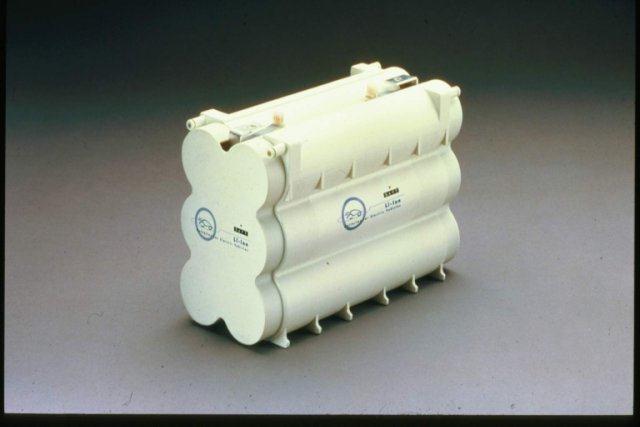
 | VENT 7 - POWER |
Introductory information
| System | Specific Energy | Density | No of discharge cycles | |
| silver zinc | 130 wh/kg | 240 wh/l | 40-50 | |
| lead acid | 30 | 65 | 100 | |
| nickel cadmium | 30 | 75 | unknown | |
| lithium polymer | 130 | 300 | 600 | |
| lithium ion | slightly lower | 250 | 1000 |
It is a solid state battery source and therefore can operate at any ambient presssure. Consequently it does not have to be enclosed in a pressure hull, which reduces mass of the final auv design. It has a high cell voltage of 3.8vdc, and a battery life of over 5 years, ideal for our self-sustaining underwater habitat.

Lithium ion can be used for over six years and can be charged over 1000 times. It is also hermetically sealed, and can be recharged in the AUV without opening pressure hull.
Lithium ion batteries offer significantly increased energy density over NiCd and NiMh technologies. Their self-discharge rates are low and thier weight is very low for a given amount of energy compared to other technologies. However, the volume may be as high as NiMH for a given amount of energy. Li+ is also power limited and high currents are not usually possible with this technology. Lithium batteries have also to be carefully charged to avoid fires and burning because the heating effect during charging can ignite the Li+. This is because as Li+ charges it heats up and the internal resistance goes down drawing more currentm thus creating a potential runaway condition. The solution is utilization of well-designed chargers that provide careful current limiting. Also, with Li+ hydrogen can be produced which is potentially explosive.
My suggestion is that we start of by using silver zinc which is what most current technologies employ. As the lithium technology is improved we can utilise Li polymer technology (as opposed to Li+ technology.) Ultimately, within the next 8 years, fuel cells can replace even the sophisticated lithium technology as they have a very high energy density.
RESOURCES
1. Lithium Ion Battery Photo: http://www.evac.ca/photoweb/Batteries/pages/..%5C..%5CBatteries%5Cimages%5Cfull%5CSaft%20Lithium-Ion%20battery.jpg